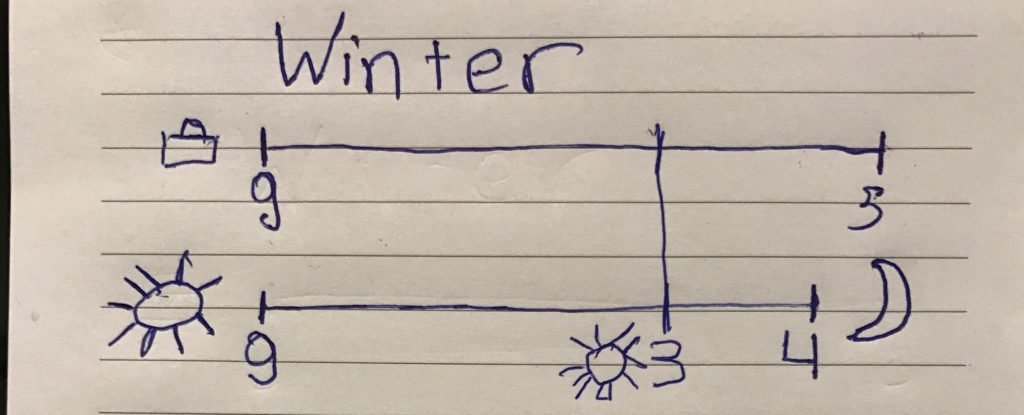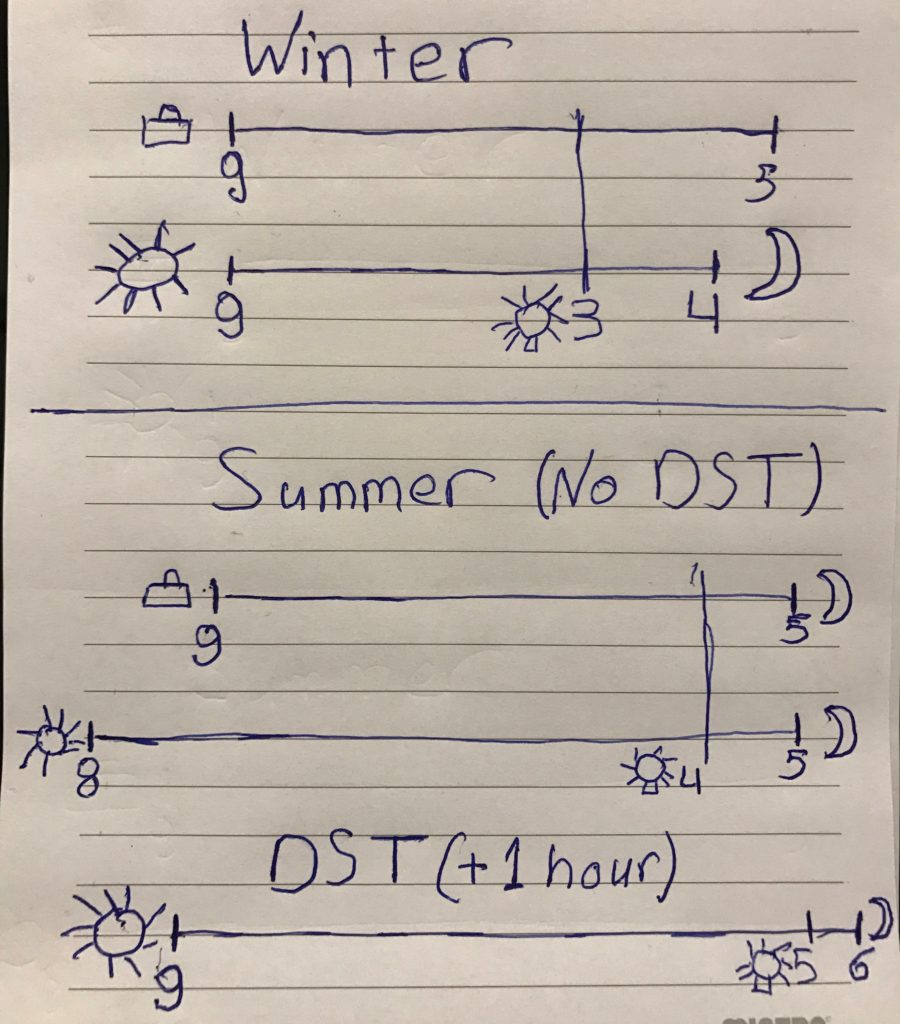Last Sunday Germany switched to daylight saving time. One realization I had recently is that many people whom I know don’t understand DST. I also didn’t understand it until I decided to demystify it for myself.
To understand DST, we need to start with two simple facts:
- Work day always starts at 9AM, and ends at 5PM.
- Your boss wants to save money on the electricity bill (More on that later).
Winter
During winter time, days become shorter. The sun rises around 9AM, and the sunset happens around 4PM. This means you have to start switching the lights on around 3PM. Making your boss paying for two hours worth of electricity before you leave.

Summer without DST
In summer things change. Days become longer. The sun rises earlier at around 8AM. It also sunsets later almost at 5PM. However, the work day stays the same. This means you need to start switching the lights on around 4PM, making your boss pay for one hour of electricity. This also means, there is a morning hour from 8 to 9 that you spend commuting from home to work.

DST
Someone came and said, ok, if I want to save electricity, what can I do benefiting from the longer summer days? There are two options.
- Change the work day to be from 8AM-4PM. However employees will not be happy and as a lazy employer myself, I wouldn’t be happy if I have to wake up one hour earlier.
- Change the hour! If 8AM became 9AM, and 5PM became 6PM, employees would still come from 9 to 5, but they would spend most of the office hours while the sun is still out, meaning by the time they leave, it is not very dark and they don’t have to switch the lights on for long. And this is why it is called “Daylight Saving Time”. Because it saves daylight and not waste it while people are asleep, commuting or enjoying their life after work.

The full picture
